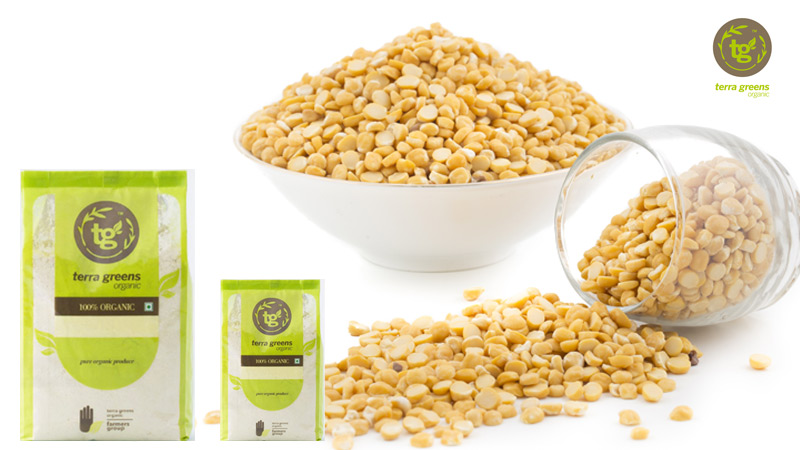A hot cup of chai, steaming pakoras or aloo bajjis, a cosy corner, watching the monsoon rains drenching green grass and the smell of damp mud. Heaven on earth, indeed! Popular Indian snacks invariably mean something dipped in besan batter and fried to perfection.
Garbanzo bean flour, gram flour, chickpea flour, Bengal gram flour are just some of the names of that all pervasive ingredient of Indian cooking – BESAN.
Traditionalists insist that besan is powdered Bengal gram or “Kala channa ” with its skin off. But flour made from chick peas (channa) which are dried and then powdered or channa dal (the de-skinned version of chick peas) are called besan too.Besan is a common and popular ingredient in not just Indian cuisine but a staple in many Asian countries too. In fact, besan could bind more than the potatoes in aloo bondas: it could be that binding factor in India’s relations with her neighbours – Pakistan, Nepal and Bangladesh. That is how popular this flour is.
The use of besan extends to the Italian Farinata and its French cousin socca(or cade)- a thin, baked pancake. Even in Morocco, Africa, gram flour is added to eggs and baked to make karan.
The chameleon of the kitchen
Besan can be used in innumerable ways – as a binder, thickener, in a variety of snacks, sweets, to make papads. Only human innovation or imagination can limit the use of this versatile ingredient. The Burmese actually make a kind of “besan tofu” which is used in salads, deep fried or dried to make crackers. In some regions of India, like Gujarat and Rajasthan, the use of besan is extensive and mind bogglingly varied because of the scarcity of vegetables in these dry and arid regions. A friend laughingly calls the cuisine here “various dishes of besan on besan”.
Besan makes a good replacement for egg in vegan cooking when mixed in equal parts with water.
Skin deep beauty secret
The traditional south Indian “head bath” means a whole body massage with a generous dose of oil followed by “body painting” with a paste made from besan, turmeric and water . After this paste has dried, it is rubbed off- this absorbs the excess oil, works as a massage and exfoliation to boot.
A paste made from 4 teaspoons of besan ,1 tsp of curd, 1tsp of lemon juice and a pinch of turmeric is used to remove tan.This makes a great hair pack too.
Your vegetarian bodybuilder
Half a cup of besan flour contains 10 grams of protein and hardly 3 grams of fat most of which is the healthy unsaturated type. It is an excellent and easy to use source of protein for vegetarians. Half a cup of besan also contains as much as 5 grams of fibre. This makes besan nutritionally dense- it takes longer to get digested. This means that you feel fuller on fewer calories and can lose those extra kilos.
Gluten free for those sensitive souls
Besan flour does not contain gluten and makes a good substitute for wheat flour in gluten free diets. If you are not too happy with the bean taste, try replacing a bit of the besan with rice flour.
Besan ka side effects
Besan’s soluble fibre content makes it a good agent for lowering cholesterol and maintaining a low glycemic index and controlling sugar cravings. The Indian gene makes us susceptible to diabetes. Modern lifestyles have increased the incidence of heart disease. Make besan your double edged sword in fighting these two diseases.
Folate for Foetal health
Half a cup of besan has 201 mg of folate which is indispensable to protein production and in the formation of genetic material. Pregnancy means quick growth and development of the foetus. Using besan in the diet during pregnancy is a good supplement of folate and especially good for the development of the spinal cord and the brain in the baby.
Vitamins are vital
Thiamine in besan helps to convert food to energy and is good for fighting fatigue needed for that extra zip. The vitamin B6 content of besan is necessary for the synthesis of red blood cells and serotonin – a neurotransmitter which controls mood and appetite.
It’s elementary, my dear
A half cup of besan has 2 milligrams of iron, 76 milligrams of magnesium and 146 milligrams of phosphorus. The magnesium content in besan helps muscles to relax and thus maintain vascular health and regulate blood pressure. Besan also has iron which is essential for “fixing” oxygen in the blood to be transported to all parts of the body. Iron is also needed for producing collagen – the scaffold on which the strength and structure of the body rests. Phosphorous aids in building bones: it carries fats (lipids) through the body and activates enzymes which are needed for the proper functioning of all bodily activities.
Besan does not mean deep fried
Though the popular avatars of besan are deep fried, there are many ways that this nutty flavoured flour can be used : so rescue it from being battered and submerged in hot oil. Here are a few suggestions: The Gujarathi dhokla /Khaman is a great way to go. Sindhi Kadi embraces the goodness of besan, is loaded with vegetables and is an absolutely yummy delight. Try this mouth watering dosa prototype from the south of India. Do not feel guilty when you pop that delicious pakoda into your mouth the next time. Just be aware of the greatness of this humble powder and use it healthfully. To double the benefits of this healthy ingredient, use it in its organic form. Same taste, better health!

